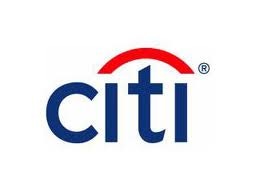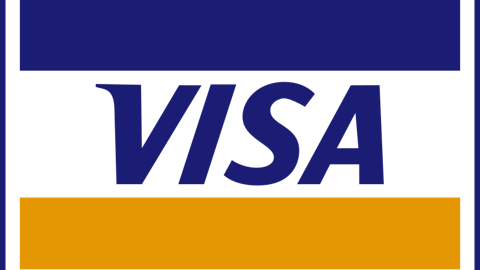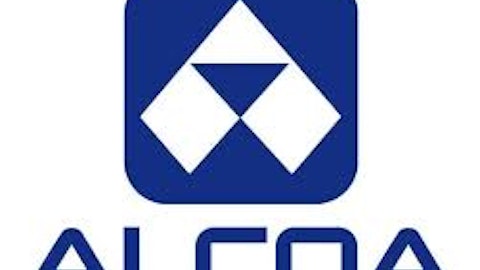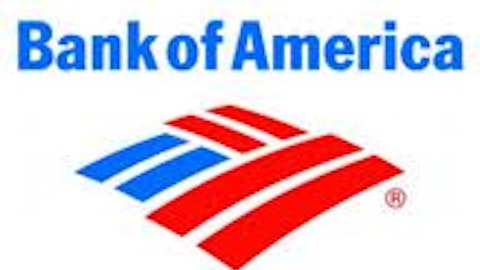Since the beginning of the year, Citigroup Inc (NYSE:C) has beaten the performance of the overall stock market. It has gained more than 30.80%, much higher than the S&P 500’s return of only 17.95%.

Should we buy shares of Citigroup Inc (NYSE:C) after its impressive second quarter results? Let’s take a look.
Citigroup’s impressive second quarter earnings
In the second quarter of 2013, Citigroup Inc (NYSE:C) has experienced good growth in both reported top line and bottom line. Revenue has increased from $18.4 billion in the second quarter last year to nearly $20.5 billion in the second quarter this year while net income rose from $2.95 billion, or $0.95 per share to $4.18 billion, or $1.34 per share during the same period.
What might make investors excited about Citigroup are Citicorp’s huge operations in fast growing emerging markets. In the past twelve months, out of the total $74 billion in revenue, around $32 billion came from emerging markets. Since the second quarter 2011, the bank reported that around 67% of the growth was from the emerging markets.
In the second quarter, net interest margin came in at 2.85%, with the average deposits of $424 billion, 7% higher than the average deposit of $396 billion last year. Looking forward, the bank would like to grow Citicorp’s business including loan growth via its focus on target client segments, despite headwinds in the North America mortgage segment. Moreover, it would wind down Citi Holdings while maintaining strong liquidity and capital positions. Citigroup Inc (NYSE:C) is trading at $51.80 per share, with a total market cap of $157.6 billion. The market values Citigroup at only 9.5 times its forward earnings and 0.83 times its book value. Citigroup Inc (NYSE:C) does not pay a lot of dividends to shareholders, at only 0.1% dividend yield. However, the payout ratio is extremely low, at only 1%.
How about JP Morgan and Wells Fargo?
JPMorgan Chase & Co. (NYSE:JPM) also reported a strong performance in the second quarter 2013.
Its total net revenue jumped as much as 14% from $22.18 billion in the second quarter last year to more than $25.2 billion in the second quarter 2013 while the net income experienced a significant growth of 31%, from $4.96 billion to nearly $6.5 billion during the same period. Diluted Earnings Per Share (EPS) also increased from $1.21 to $1.60. JPMorgan Chase & Co. (NYSE:JPM)’s net interest margin came in a bit lower than Citigroup, at 2.2%, with the year-over-year deposit growth of 8% to $1.2 trillion.
Wells Fargo & Co (NYSE:WFC) also enjoyed the strong second quarter 2013 earnings as well. Its revenue increased by $89 million to $21.4 billion while the net income rose as much as 19% to $5.5 billion, compared to the second quarter last year. The diluted EPS grew by 20% to $0.98 per share. Investors might like Wells Fargo & Co (NYSE:WFC) the most with its highest net interest margin among the three banks, at 3.46%. The average core deposits were up 6.4% to $936.1 billion.
Citigroup offers a lower yield but also lower valuation
Income investors might like JPMorgan Chase & Co. (NYSE:JPM) and because of their much higher dividend yields. Both JPMorgan Chase & Co. (NYSE:JPM) and Wells Fargo & Co (NYSE:WFC) offer their shareholders a much higher dividend yield at 2.8%. However, both of them have a much higher payout ratio, at 21% for JP Morgan and 26% for Wells Fargo. Those two banks were valued at much higher price-to-book values. JPMorgan Chase & Co. (NYSE:JPM) is trading at $54.90 per share, with the total market cap of $207.6 billion. It is valued at more than 9 times its forward earnings and 1.05 times its book value. At $43.40 per share, Wells Fargo & Co (NYSE:WFC) is worth $229.90 billion. It is valued at 10.9 times its forward earnings and 1.55 times its book value.
Looking forward, I like Wells Fargo & Co (NYSE:WFC) the most as it plans to repurchase a higher amount of shares in 2013 than 2012. If we just assumed that Wells Fargo spend a similar $4 billion in share repurchases like in 2012, the repurchase yield might reach around 1.74%. Including the dividend yield of 2.8%, the total yield for 2013 could stay around 4.54%. JPMorgan Chase & Co. (NYSE:JPM) will also return cash to its shareholders via a $6 billion authorization of share buybacks through the first quarter of next year. Thus, JPMorgan Chase & Co. (NYSE:JPM)’s total yield might be the highest at nearly 5.7%. Citigroup Inc (NYSE:C) seems to give investors the lowest potential total yield at 1.76% (with the plan to buy back $1.2 billion worth of shares).
My Foolish take
All of those three mega banks seem to be good stocks for investors to hold in a long run. Wells Fargo & Co (NYSE:WFC) and JPMorgan Chase & Co. (NYSE:JPM) are more attractive in terms of total yield to shareholders (dividends + share buybacks), while Citigroup is more attractive in terms of price-to-book valuation.
I personally think that Citigroup Inc (NYSE:C), with the strong second quarter earnings results, global banking franchise, should be trading for at least its book value, which would be a gain to investors of about 17% from current prices.
Anh HOANG has no position in any stocks mentioned. The Motley Fool recommends Wells Fargo. The Motley Fool owns shares of Citigroup Inc (NYSE:C) , JPMorgan Chase & Co. (NYSE:JPM), and Wells Fargo & Co (NYSE:WFC).
The article Which Megabanks Are Good for Investors Now? originally appeared on Fool.com.
Anh is a member of The Motley Fool Blog Network — entries represent the personal opinion of the blogger and are not formally edited.
Copyright © 1995 – 2013 The Motley Fool, LLC. All rights reserved. The Motley Fool has a disclosure policy.



